Figures & data
Figure 1. TMEM119 is highly expressed in breast cancer cells and tissues. (a) TMEM119 mRNA level was determined in clinical samples. (b) TMEM119 protein level was evaluated in clinical samples. (c–e) The relationship between TMEM119 expression and overall survival, relapse-free survival and post progression survival of patients was evaluated through online dataset analysis. (f and g) TMEM119 expression was examined in normal breast epithelial cells and different types of breast cancer cells. n ≥ 3, *P < 0.05, **P < 0.01 vs. control
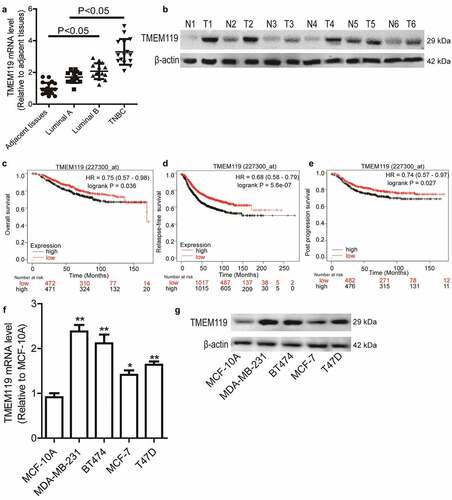
Figure 2. TMEM119 supports the stemness of breast cancer cells. (a and b) The mRNA levels of stemness markers were detected in breast cancer cells with TMEM119 knockdown or overexpression. (c and d) The protein levels of stemness markers were examined in breast cancer cells with TMEM119 knockdown or overexpression. (e and f) The spheroid number and size were assessed in breast cancer cells with TMEM119 knockdown or overexpression. (g) ALDH activity was evaluated in breast cancer cells with TMEM119 knockdown or overexpression. n ≥ 3, **P < 0.01 vs. control
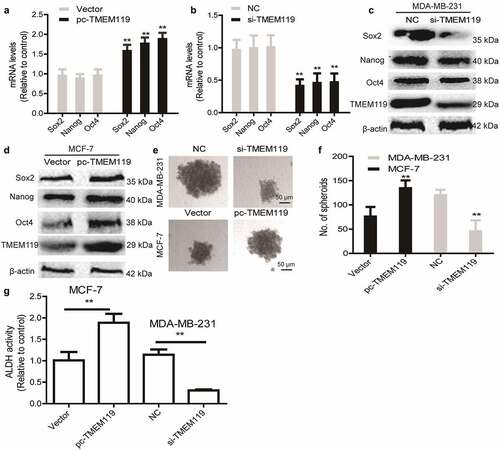
Figure 3. TMEM119 promotes the migration, invasion, and EMT process of breast cancer cells. (a and b) The migration ability of breast cancer cells with TMEM119 overexpression or knockdown was evaluated via wound healing assay. (c and d) The invasion ability of breast cancer cells with TMEM119 knockdown or overexpression was determined via transwell invasion analysis. (e–g) The expression of EMT markers was detected in breast cancer cells with TMEM119 knockdown or overexpression. n ≥ 3, **P < 0.01 vs. control
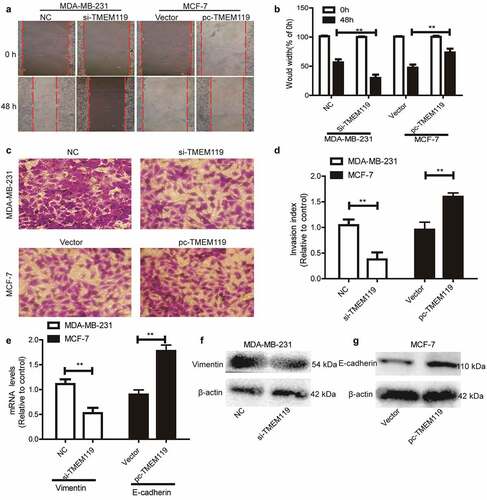
Figure 4. TMEM119 activates Wnt/β-catenin signaling pathway by interacting with β-catenin. (a) KEGG pathway enrichment was analyzed based on RNA-sequencing data in MCF-7 cells with or without TMEM119 overexpression. (b) The activity of TOPFlash and FOPFlash was examined in breast cancer cells with TMEM119 knockdown or overexpression. (c) Co-IP was performed to detect the β-catenin-TMEM119 interaction. (d) The protein stability of β-catenin was evaluated in breast cancer cells with TMEM119 knockdown or overexpression. (e) The expression of stemness markers and β-catenin downstream effectors was revealed based on the RNA-sequencing data. n ≥ 3, **P < 0.01 vs. control

Figure 5. β-catenin directly binds to TMEM119 promoter and thus increases TMEM119 expression. (a) The diagram showing the potential β-catenin binding sites on TMEM119 promoter sequences. (b and c) Luciferase reporter analysis was carried out to detect the effects of β-catenin on TMEM119 promoter activity. (d and e) ChIP analysis was constructed to evaluate TMEM119 promoter abundance in DNA pulled down by anti-β-catenin. (f–h) TMEM119 expression was examined in breast cancer cells with β-catenin overexpression or knockdown. n ≥ 3, **P < 0.01 vs. control, ##P < 0.01 vs. NC
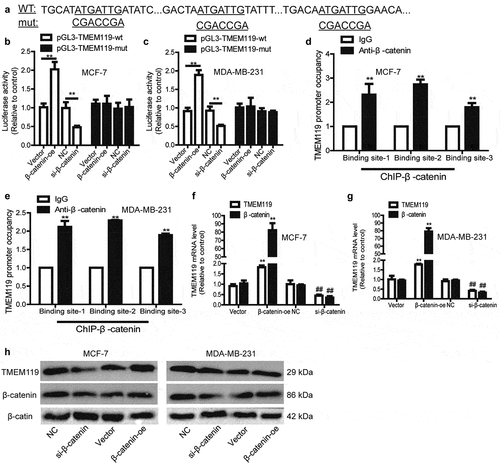
Figure 6. TMEM119 promote the stemness breast cancer cells dependent on Wnt/β-catenin pathway. (a and b) The mRNA levels of stemness markers were determined in TMEM119-overexpressed breast cancer cells with β-catenin knockdown, or TMEM119 knockdown plus β-catenin overexpression. (c) The protein levels of stemness markers were measured in the cells as described in (a). (d and e) The spheroid number and size were evaluated in the cells as described in (a). (f) ALDH activity was determined in the cells as demonstrated in (a). n ≥ 3, **P < 0.01 vs. control, ##P < 0.01 vs. si-TMEM119 or pc-TMEM119
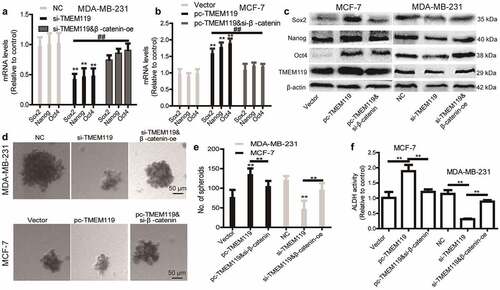
Data availability statement
All data generated or analyzed during this study are included in this published article (http://dx.doi.org/10.1080/21655979.2021.1960464).
